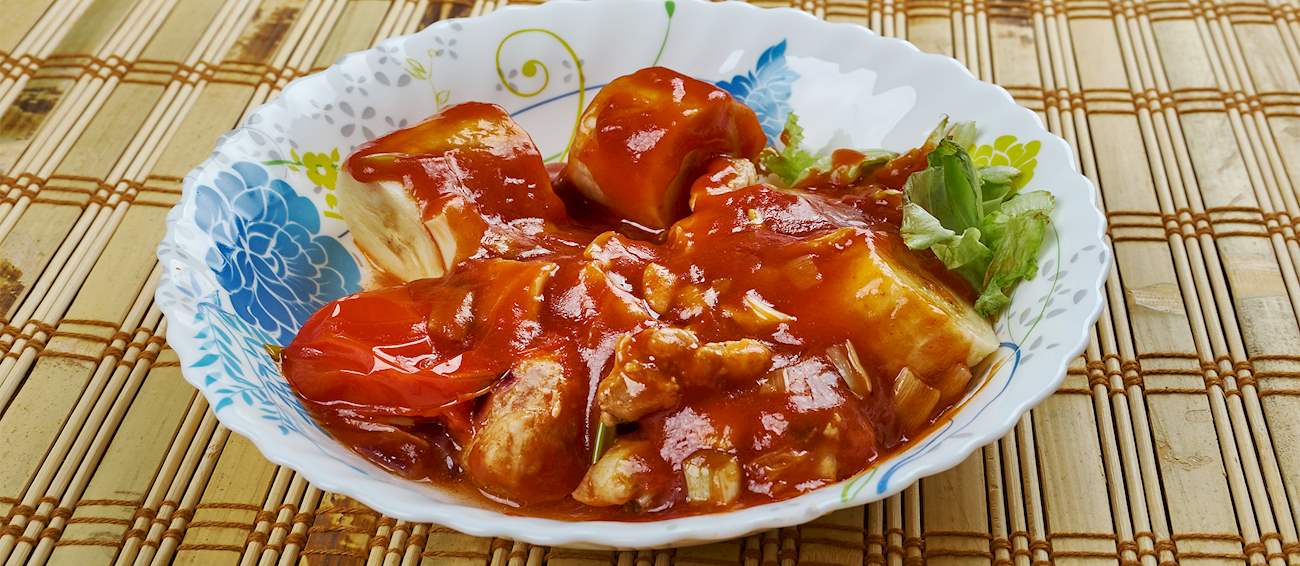Pozole is a soupy and aromatic Mexican stew that comes in three versions – red, white, and green, symbolizing the colors of the Mexican flag. Although there are many variations, the white version known as pozole blanco is usually made with a combination of pork, hominy, garlic, onions, and garnishes such as avocado slices, lime wedges, and diced onions.
The onions, garlic, salt, and water are blended until smooth, and then mixed with the rest of the ingredients. The mixture is covered with water and simmered for a few hours until everything is fully cooked. The stew is served in individual bowls and it's usually garnished with avocado slices, lime wedges, and diced onions.
Mancha manteles is a unique Mexican stew made with a variety of meat, vegetables, fruits, and chili peppers. The name of the dish means tablecloth stainer, possibly referring to the fact that it is so delicious, so people will consume it fast and stain the tablecloth in the process.
Most recipes for mancha manteles call for tomatoes, pineapple, apples, pears, almonds, onions, pork, turkey, and chorizo. Serve this unusual stew with white rice and warm tortillas for the best experience.
MAIN INGREDIENTS
Carne guisada is a simple, traditional beef stew flavored with cumin, jalapeños, and chili powder. It is popular throughout Latin America, especially in Mexico, Puerto Rico and the Dominican Republic. The dish is usually simmered over low heat for about two hours until the meat becomes tender.
It is recommended to serve it on flour tortillas, although it can also be paired with rice or potatoes.
TasteAtlas food rankings are based on the ratings of the TasteAtlas audience, with a series of mechanisms that recognize real users and that ignore bot, nationalist or local patriotic ratings, and give additional value to the ratings of users that the system recognizes as knowledgeable. For the “3 Worst Rated Mexican Stews” list until March 26, 2025, 1,012 ratings were recorded, of which 525 were recognized by the system as legitimate. TasteAtlas Rankings should not be seen as the final global conclusion about food. Their purpose is to promote excellent local foods, instill pride in traditional dishes, and arouse curiosity about dishes you haven’t tried.











